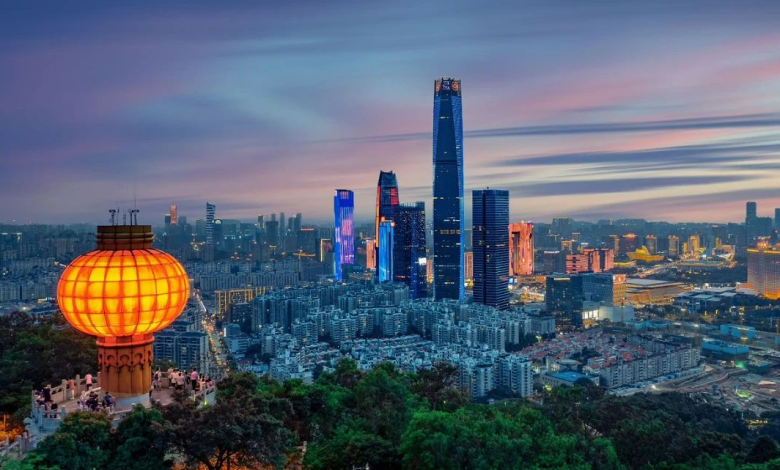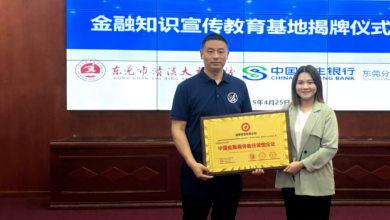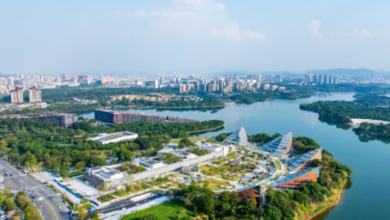Steel and Soul: Dongguan’s Journey From Manufacturing Hub to Cultural Innovator

Dongguan, long known as the “World’s Factory,” is undergoing a remarkable transformation—one that blends industrial prowess with artistic vision. The city, which has powered China’s manufacturing boom for decades, is now pioneering a new concept: “manufacturing aesthetics.” This innovative approach is reshaping not only Dongguan’s identity but also offering fresh perspectives for global industrial culture.
From Factory Floors to Art Galleries
The idea of manufacturing aesthetics took root three years ago when local artist Li Jinghu proposed to city officials that Dongguan should embrace contemporary art. “After forty years of manufacturing, our industrial waste and materials all tell the story of Dongguan,” he argued. His vision materialized in 2024 with the groundbreaking exhibition “I Am Here! A City and 200 Million People’s Testimony of Presence,” held at Beijing’s Langyuan X Art Museum. The show, featuring installations made from factory scraps like mosaic glass and discarded electronics, celebrated the lives of the millions of migrant workers who built Dongguan.
One standout piece, Li’s “Waves,” used vintage mosaic tiles from 1980s construction sites to pay tribute to the city’s laborers. For many of the estimated 200 million workers who have passed through Dongguan since the 1980s, such art evokes deep nostalgia. Xu Shali, a former retail worker turned entrepreneur, tearfully recalled her journey upon seeing the exhibit: “It took me back to my years of chasing dreams here.”
The Six Dimensions of Manufacturing Aesthetics
In December 2024, Dongguan became the first Chinese city to formally articulate a framework for manufacturing aesthetics, spanning six dimensions:
- Design: The annual “Dongguan Cup” industrial design competition, dubbed the “Oscars of design,” has spurred innovations like Vivo’s AI-powered smartphones and LiberLive’s stringless guitars.
- Craftsmanship: Companies like Dingtai Tech and KEG produce microscopic drill bits and ultra-precise circuit boards, marrying precision with artistry.
- Production: Smart factories like Modelab in Songshan Lake use fully automated “lights-out” production lines, showcasing efficiency as an aesthetic.
- Product: From lunar-inspired watches to viral “Guochao” (national trend) toys, Dongguan-made goods now carry cultural narratives.
- Humanities: The hit musical Dongguan East, inspired by the city’s migrant hub train station, turned worker stories into poignant theater.
- Philosophy: By elevating factory labor into cultural discourse, Dongguan challenges stereotypes of manufacturing as purely utilitarian.
Cultural Revival in an Industrial Powerhouse
Dongguan’s shift mirrors China’s broader “aesthetic economy” trend, where cities fuse industry with creativity. Once criticized as a cultural desert, the city now boasts thriving subcultures—think dragon boat races that go viral, indie music festivals, and even a “Writer’s Village” attracting literary talent. In 2023, Dongguan launched a “Cultural Strong City” initiative, investing in museums, theaters, and events like the Strawberry Music Festival. The payoff? Tourism revenue jumped 20% in 2024, with holiday visitor numbers rivaling top-tier cities.
The Human Core of Industrial Evolution
At its heart, Dongguan’s manufacturing aesthetics movement is about honoring people. The “Find the 1 in 200 Million” campaign, inviting former migrants to revisit the city, underscores this ethos. As propaganda chief Wu Yiting notes, “Only by centering humanity can industry and cities truly progress.” From library-loving migrant workers to female basketball champions, Dongguan’s new icons reflect its cultural awakening.
A Blueprint for Global Manufacturing
Dongguan’s experiment offers lessons far beyond Guangdong. By proving that factories can inspire art—and that industrial cities can stir souls—it redefines what “advanced manufacturing” means. As economist He Yingkun observes, “This isn’t just about products; it’s about reimagining industry as a cultural force.” For the world’s workshop, beauty is now part of the assembly line.
With its skyline lit by both LED factories and neon art installations, Dongguan embodies a bold truth: The future of manufacturing isn’t just smarter—it’s more poetic.





